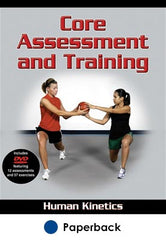Stretching the Tensor Fasciae Latae and the Iliotibial Band
This is an excerpt from Core Assessment and Training by Human Kinetics.
The tensor fasciae latae (TFL) muscle arises from the upper anterior portion of the pelvis, and it inserts into the iliotibial band (ITB). The ITB is a tendinous structure extending from the gluteus maximus and the tensor fasciae latae. The ITB inserts at the fibular head, the lateral patellar retinaculum, and Gerdy's tubercle on the lateral aspect of the tibia (Paluska 2005; Messier et al. 1995). Pain in this lateral region is common for certain types of athletes such as distance runners.
Irritation to the ITB (known as iliotibial band syndrome) has been a source of pain for those who ramp up their training mileage too quickly and those who train incorrectly. Treatment programs include stretching the ITB as a key component to a comprehensive rehabilitation program. The following set of stretches will address both the tensor fasciae latae and the iliotibial band.
Static Stretching Techniques for the TFL and ITB
Starting position: The client is standing near a wall and is using the arm closest to the wall to provide support. The leg closest to the wall is crossed behind the opposite leg.
Movement: To create the stretch, the client side bends the trunk away from the wall.
Variations: The client is positioned in the same starting pose. She brings her hands together above her head. To create the stretch, the client side bends to the side opposite the hip being stretched while keeping her arms extended overhead. Researchers found that this position provided the best pose for increasing ITB length (Fredericson et al. 2002).
Dynamic Stretching Techniques for the TFL and ITB
Starting position: The client assumes a standing position with the legs approximately shoulder-width apart.
Movement: The client first lifts the knee out to the side and then swings the foot to the front of the body to take the next step.
Muscles: This dynamic stretch addresses the hip flexors, the hip abductors, the hip external rotators, the TFL, and the quadriceps.
Foam Roll Application for the Iliotibial Band
Starting position: The client assumes a side-lying position on the foam roll. The client flexes the hip of the top leg and positions it so that the foot can rest to the front of the bottom leg.
Movement: The client rolls his body the length of the upper leg (from the top of the pelvis to a point just below the knee joint).
This is an excerpt from Core Assessment and Training.
More Excerpts From Core Assessment and Training

Get the latest insights with regular newsletters, plus periodic product information and special insider offers.
JOIN NOW


